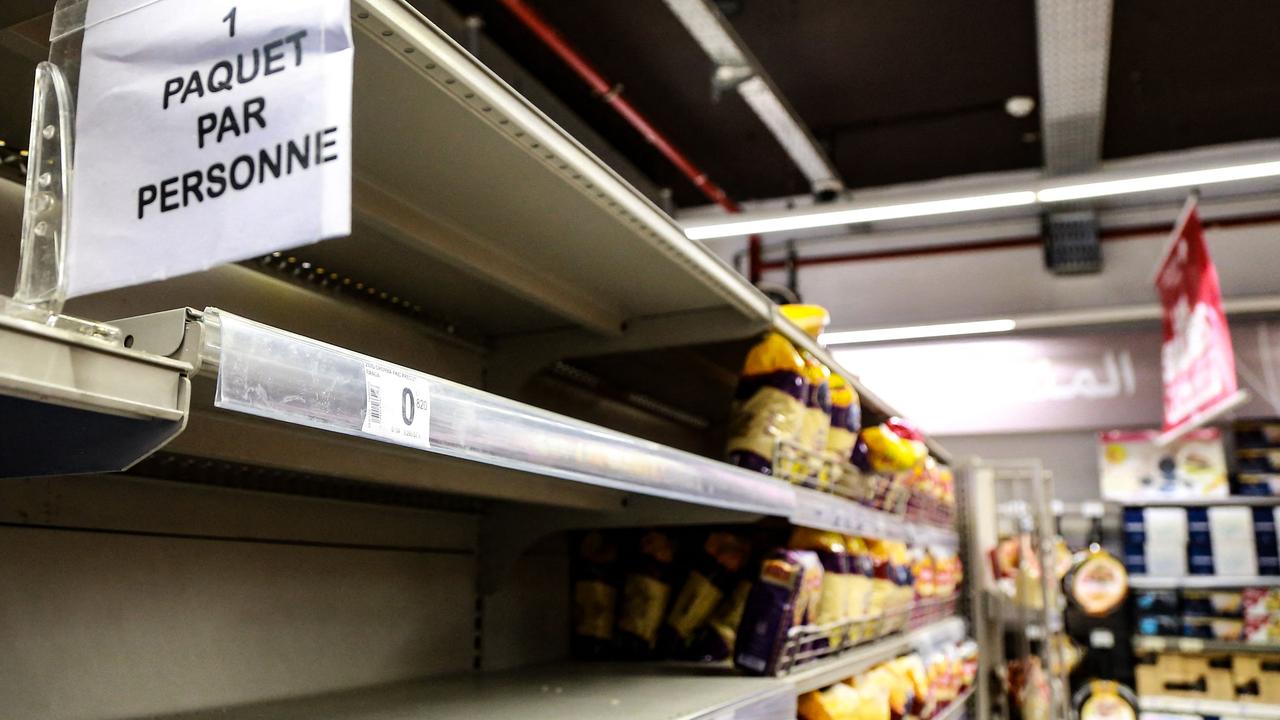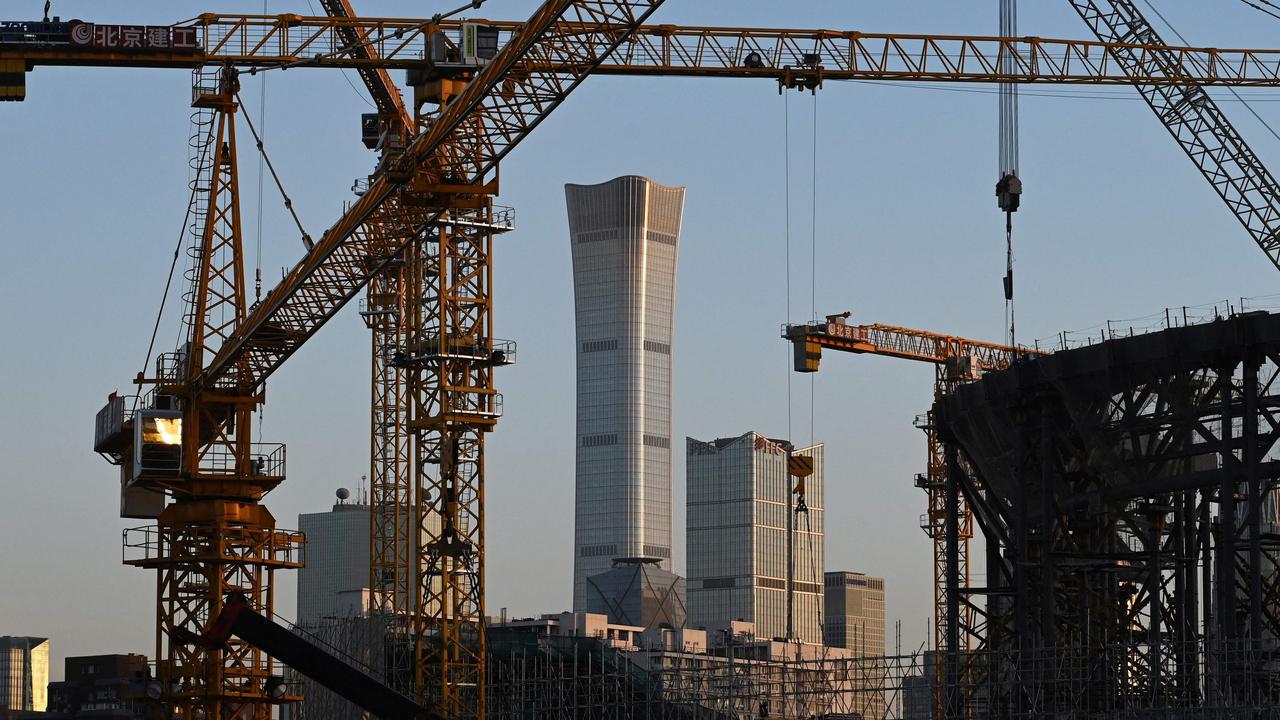China’s crisis and inflation could impact Australia’s economy
China has attempted to destroy Australia’s economy in the past but this time there’s a combination of factors that are even out of Beijing’s control.
In the years since the Global Financial Crisis first arrived on Australia’s shores in 2008, the tale of Australia’s economic performance has been impossible to separate from the success story that is the industrialisation of China.
Seemingly like clockwork, every time the Aussie economy started looking like its luck was finally about to run out, another industry would boom in the Middle Kingdom or a Chinese government stimulus program would inadvertently ride to the Lucky Country’s rescue.
While it may not have been as apparent as it was in the late 2000s, Chinese demand for Aussie bulk commodity exports once again came to Australia’s aid in the two years since the pandemic began. Despite Beijing’s attempts to hit the Australian economy again and again through punitive trade actions, China’s insatiable appetite for iron ore and coking coal saw them once again significantly boost Australia’s fortunes.

Between April 2020 and May 2021, the price of Australia’s single largest export iron ore, tripled in value, providing a huge boost to the economy and a hard hit Treasury bank balance.
But as a series of global challenges including those stemming from the war in Ukraine slowly become clearer, it raises a major question, will Chinese demand for bulk commodities be there to cushion Australia’s fall next time things start to go wrong?
Existing challenges
As the war in Ukraine continues to rage, it’s increasingly easy to see the challenges the world faces through the lens of the impact of the ongoing conflict. But even before the first Russian tanks crossed the border on February 24, a number of different indicators were already pointing to some difficult times ahead.
Globally, fertiliser prices were heading toward all-time highs, with some regional indices reaching similar price levels to those that were historically associated with contributing to social unrest in 2008 and the Arab Spring movement in 2011.
In China, cities were still heading in and out of lockdown, as Beijing continued its ‘Covid Zero’ strategy of coping with the virus by using some of the most strict movement restrictions in the world.

As anyone who’s been to a supermarket or petrol station even prior to the war in Ukraine could tell you, the cost of living was already taking off globally before the first shot was fired.
In the US, annual inflation hit 7.9 per cent, its highest reading since the early 1980s. In Germany, the cost pressures being faced by manufacturers hit the highest level since 1949, which was defined by the aftermath of the Second World War.
With inflation returning with a vengeance after spending decades largely contained in much of the developed world, central banks around the globe rapidly shifted from easy monetary policy designed to combat the pandemic to swiftly raising interest rates.
And then things got worse
Since the war in Ukraine began these challenges have been amplified significantly, particularly the issue of food security which has become a problem at the forefront of the concerns of world leaders.
French President Emmanuel Macron warned last week that “We are entering an unprecedented food crisis.”
“The war in Ukraine makes it impossible to sow [seeds] as much is needed and is creating a situation that will be even worse in 12-18 months. This situation will create a food crisis and serious humanitarian situations in many countries, surely with massive political consequences,” he said.

Earlier this month, Chinese President Xi Jinping warned the People’s Political Consultative Conference, that China cannot rely on international suppliers to ensure China’s food security, remarking that “the rice bowls of the Chinese people are filled with Chinese grain”.
China’s Issues
While inflationary pressures and issues with food security are likely to hit developing nations by far the hardest, the world’s most populous nation will also face some major challenges as it seeks to feed its enormous population while also maintaining its run of economic success.
With several major Chinese cities currently in lockdown, including the mega metropolis of Shanghai, impacted households and businesses face an uphill battle amid slowing growth within the Chinese economy.
According to recent data released by the Chinese government’s National Bureau of Statistics, the non-manufacturing sector is currently undergoing only its second ever contraction in the 15 years since records began.

Meanwhile, the Chinese property sector’s woes have continued with property think tank China Index Academy recording total housing sales by floor space falling by 49.1 per cent year on year in March, a significantly larger fall than the 23.4 per cent year on year drop recorded in February.
China’s problems may drag on Australia
If the war in Ukraine and all the issues that come with it become protracted, Beijing will need to dedicate an increasingly sizeable proportion of its resources to ensuring food prices remain affordable and to supporting to households and businesses with the impact of rising costs.
Some major steps toward these goals have already been taken in recent days, with the announcement that Beijing would be earmarking 1 trillion yuan ($210 billion AUD) in VAT refunds to small businesses, self-employed households and general VAT payers across all sectors.
A State Council meeting led by Premier Li Keqiang on Wednesday called on the nation to prioritise stable growth and to draft contingency plans to deal with possible greater uncertainties, according to Chinese state media.
While it’s possible stimulus programs may benefit Australia in the short term, in the form of greater demand for bulk commodity exports. In the longer term the more resources that are expended on supporting households and businesses the less there will be for the traditional engines of Chinese growth such as the construction sector.
Despite the issues in the Chinese property sector largely going quiet in terms of broader media coverage, those issues have not gone away. Behind the scenes the situation continues to deteriorate for many large developers, including mega developer Evergrande whose obligations are almost twice as large as Russia’s entire sovereign debt.
Whether China will continue to ride to the rescue of the Lucky Country amid these rapidly evolving challenges remains to be seen, but it may be a circumstance the government may need to confront in what is shaping up to be a difficult next parliamentary term.
Tarric Brooker is a freelance journalist and social commentator | @AvidCommentator






